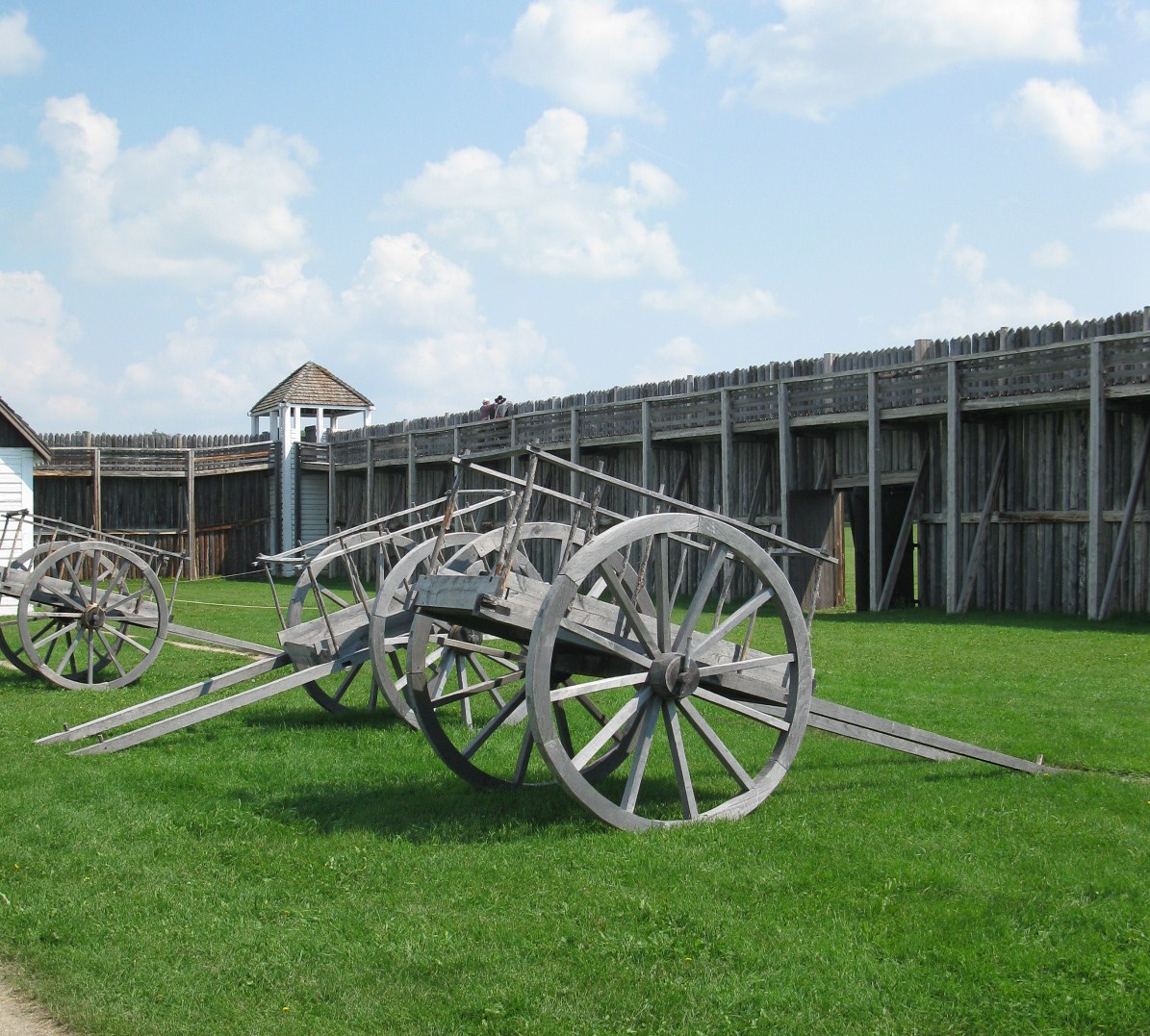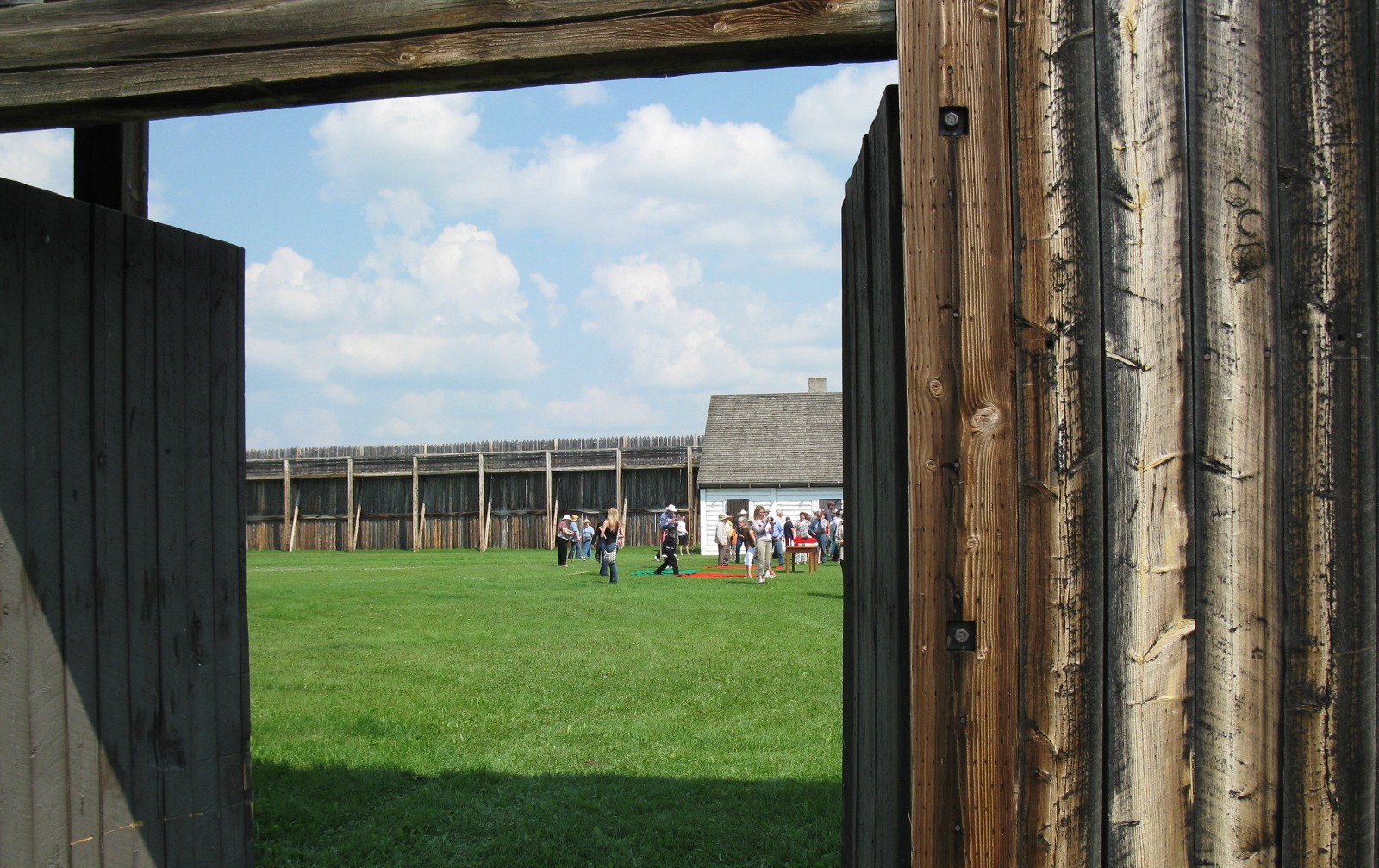
Treaty 6 Basics

Treaties are formal agreements negotiated between two or more sovereign Nations.
Who are the Treaty Partners in Saskatchewan?
- The First Nations groups: Cree, Saulteaux, Nakota, and Dene
- The Dominion of Canada on behalf of the Queen of Great Britain.
Treaty 6 was signed on August 23, 1876 at Fort Carlton and at Fort Pitt on September 9, 1876. Adhesions to the treaty were signed at later dates.
What benefits did First Nations believe they were to receive in signing Treaty Six?
First Nations understood they would receive assistance to the transition of a new lifestyle, maintenance of their cultural and spiritual rights, right to hunt, trap, and fish, education, medical assistance, reserve land, agricultural tools and support, and peaceful co-existence with the newcomers. The text of the Treaty states:
- Reserve land in the amount of one square mile per family of five;
- An annual cash payment at a rate of $25 per Chief, $15 per headman and $5 for all other band members, and a one time present of $12 for each member of the band who agreed to the Treaty;
- Twine and ammunition at a value of $1500 per year;
- For each band and family certain agricultural implements such as hoes, spades, livestock, horse, and wagon;
- A school once the people settled on a reserve;
- The right to pursue hunting, trapping, and fishing;
- A medicine chest to be kept at the house of the Indian agent on each reserve;
- Rations were to be given in times of pestilence and famine;
- During the first three years after Treaty was taken, First nations who had settled on reserves and were farming were to receive $1000 in agricultural provisions. (Dodson21)

What additions to Treaty 6 did the First Nations leaders ask for not recognized in earlier Treaties?
-
Medicine Chest (medical care) and;
- Relief in times of famine and pestilence.
Which First Nations people negotiated to include these additional provisions?
-
Poundmaker (who was a headman of Red Pheasant) and;
-
Sasakamoose (brother of Ahtahkakoop)
What benefits did the Newcomers receive through Treaty Six?
Newcomers would receive a peaceful co-existence with First Nations people, access to lands for settlement, farming, railways, and future industrial development.
Who were the main First Nations leaders to negotiate Treaty 6 at Fort Carlton?
- Mistawasis (Big Child);
- Ahtahkakoop (Starblanket)
Which First Nations leaders were not present at the original Treaty 6 negotiations?
-
Big Bear;
- Little Pine;
- Lucky Man
What is a Treaty adhesion?
Some First Nations bands were not present at the Treaty negotiations and therefore signed an adhesion to Treaty at later dates. Adhesions had the same effect as Treaty were originally signed.
Who signed Adhesions to Treaty 6 in Saskatchewan?
Little Pine and Lucky Man bands adhered to Treaty 6 at Fort Walsh on July 2, 1879. Big Bear in 1882 and the Lac La Ronge and Montreal Lake bands in 1889.
Who are the First Nations of Treaty 6 in Saskatchewan?
Ahtahkakoop First Nation
Beardy's & Okemasis First Nation
Big Island Lake First Nation
Big River First Nation 
Flying Dust First Nation
Island Lake First Nation
James Smith Cree Nation
Kinistin First Nation
Lac La Ronge First Nation [a few reserves]
Little Pine First Nation
Lucky Man Cree Nation
Makwa Sahgaiehcan First Nation
Mistawasis First Nation
Montreal Lake First Nation
Moosomin First Nation
Mosquito Grizzly Bear's Head and Lean Man First Nation
Muskeg Lake Cree Nation
Muskoday First Nation
One Arrow First Nation
Onion Lake First Nation
Pelican Lake First Nation
Peter Ballantyne Cree Nation (one reserve)
Poundmaker First Nation
Red Pheasant First Nation
Saulteaux First Nation
Sturgeon Lake First Nation
Sweetgrass First Nation
Thunderchild First Nation
Witchekan Lake First Nation
Who are beneficiaries of Treaty 6?
All people living within the treaty territory of Treaty 6 are beneficiaries.
How long do Treaties last?
The spirit, intent, and provisions of the Treaties last forever, as long as the sun shines, the grass grows, and the rivers flow.